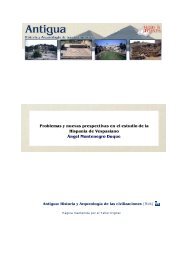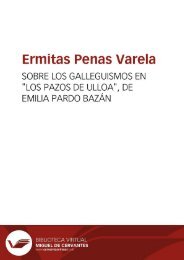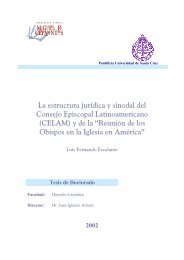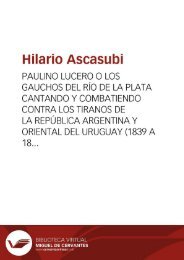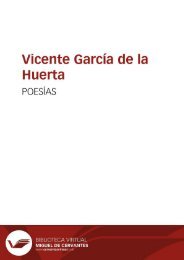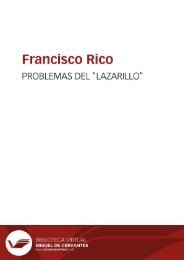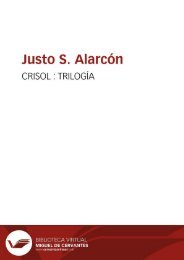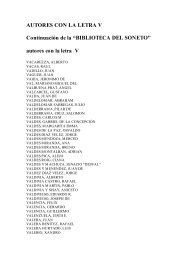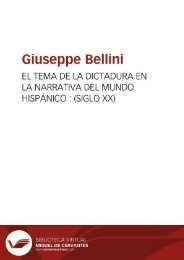Create successful ePaper yourself
Turn your PDF publications into a flip-book with our unique Google optimized e-Paper software.
Anales galdosianos [Publicaciones periódicas]. Año XII, 1977<br />
une foule organisée, ou, si l'on préfère, une foule psychologique. Elle forme un seul être et se trouve<br />
soumise à la loi de l'unité mentale des foules. 20 ( Le Bon's emphasis. )<br />
This statement should be compared with <strong>Galdós</strong>' description, through La Zarza, a personage in El<br />
audaz (1871), of the Parisian mob: « Ninguno era dueño de sí mismo; todos habían abdicado su<br />
persona ante la colectividad, y cada cual dejó de ser un individuo para no ser más que muchedumbre<br />
» (P. 255).<br />
Something is still lacking to set this creature in motion: « Falta que una voz sola diga lo que todos<br />
sienten » (p. 64). The emotions felt by the organism must be expressed; this expression cannot be<br />
multiple if it is to represent one single creature. The « voz » which is needed must be « una » and<br />
« sola ». Furthermore: « esa voz dice lo que una multitud no puede decir; porque la multitud, que<br />
obra como un solo cuerpo con decisión y seguridad, no tiene otra voz que el rumor salvaje, compuesto<br />
de infinitos y desiguales sonidos » ( ibid. , my emphasis).<br />
Lázaro asks himself: « ¿Sería el verbo revelador de aquel cuerpo ciego e inconsciente? ¿Hablaría o<br />
no hablaría? » ( ibid. ). Finally, his resistance disappears entirely and he is drawn into the organism<br />
as the necessary « verbo ». The description of his absorption is extremely vivid: « Lázaro se mezcló<br />
en el torbellino. Sus ojos brillaban con extraordinario resplandor; su inquietud era una convulsión; su<br />
agitación, una fiebre; su mirada, un rayo » ( ibid. ). This is not the description of a man simply<br />
joining with his fellows: Lázaro is undergoing a metamorphosis which <strong>Galdós</strong> felt important enough<br />
to portray in a searching «close-up» of the protagonist at a crucial moment. There is, in the vocabulary<br />
depicting Lázaro's incorporation in the organism (« convulsión », « agitación », « fiebre ») and<br />
the appearance of his eyes, the suggestion, quite possibly unconscious on <strong>Galdós</strong>' part, of sexual union;<br />
this latter type of union may result, as does incorporation in a group-organism, in the creation of a<br />
new being. Furthermore, in both cases the creation of the new entity is accompanied by the temporary<br />
surrender of the personality on the part of the individuals who unite in this endeavor. The elements<br />
of attraction, resistence, surrender, pleasure within that surrender, and temporary abandonment of the<br />
self in the creation of another being, are factors common on one hand, to the process under scrutiny<br />
in which individuals form the group-organism and, on the other, to sexual reproduction. Perhaps one<br />
might suggest some analogy between the distinction orador-hombre and a dichotomy representing<br />
procreation and self-preservation.<br />
20 Ibid. , p. 9.<br />
19




